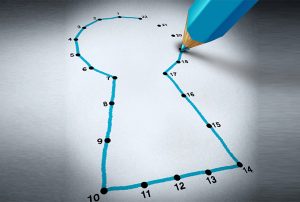For Christmas 2019, I was given a set of Sony WH-1000XM3 noise-cancelling headphones by my son, Ryan. He knew I loved listening to music, and that these would be great to take with me on an airplane when travelling for business. They truly are remarkable. I turn them on, and all I hear is music. I may as well be in an entirely different world.
Whether we are at work or play, we live in a world where distraction and noise are a normal part of our lives. Daniel Kahneman addresses this reality in the context of how noise and bias influence our judgements and decisions every day, no matter how small or large.
Your mind as a measuring instrument
Reducing the impact of distraction and noise when making decisions
What factors might be affecting your judgment?
Why is it that we might make a different decision at another point in time, even after having considered the same factors? If we use the example provided by Kahneman of professional basketball players taking a free throw from the foul line, we know from experience that no matter how many thousands of times they have practiced their setup they will still sometimes miss. Why? Because of the variability of players, both between them and within them. Apart from different abilities, an individual player’s response to noise in the moment – such as the external and internal factors outlined above – can impact the success of the shot.
According to the prolific research on the effect of moods on judgment by Joseph Forgas, mood has a measurable influence on what you think, and what cues you pick up from your environment. The reality is, “you are not the same person at all times.”2
If this is true, how do we mitigate making a poor decision because our mindset and mood are not in the best place? How is it possible to reduce the noise that can frequently get in the way of making a better decision? What we do know is that noise can never be fully eliminated, but we can reduce the external influences on the judgments and decisions we make. Here are a few tips—
- Slow down. Step back from the decision you feel pressured to make and let some of the emotion dissipate. If the decision is not needed today, then set aside some time in your calendar to make it tomorrow when you are not under the same amount of pressure or where your focus is not divided
- Speak to a trusted friend, coach, mentor or advisor. Look for some wisdom from perspectives you’ve not previously considered.

Dealing with noise that is often amplified in teams?
Similar to the pressure professional basketballers feel when making a free throw, the noise within a team at a workplace can also be immense, especially if there is pressure to make a decision that aligns with the majority of the team.
Social pressure from within the team—even when it is based on incorrect information—will often win out and lead to a poor decision. Kahneman discovered that “after people talk with one another, they typically end up at a more extreme point in line with their original inclinations.”3.
To avoid group-think and the bias often caused by ideas that have strong emotions attached to them, invite input from your team in a more structured manner than merely having colleagues and peers bombard you with the views they are clearly passionate about. Arrange for an independent facilitator to conduct a brainstorming session, and write the ideas down along with their benefits and challenges so you can evaluate them later when there is no pressure to make an immediate decision. This can help you to make a decision you can own and clearly justify, even if it means it might be a contradictory position to some others in the team.
What’s the bottom line?
Distraction and noise are a normal part of a leader’s life, and it’s important to find strategies that will give you the confidence to make good decisions and also to avoid making ones you will later regret. The decision making process doesn’t have to be complex merely because everyone around you has a different opinion or idea. The key to confident decision making is to be more intentional in creating an environment with the support of a structured process that can be leveraged to give you the best inputs while learning how to objectively sift through the noise.
Time to go and practice my free-throws!
1 Noise: A Flaw in Human Judgment by Daniel Kahneman, Oliver Sibony, and Cass R. Sunstein, 2021 (p.41)
2 ibid (p.89)
3 ibid (p.105)




